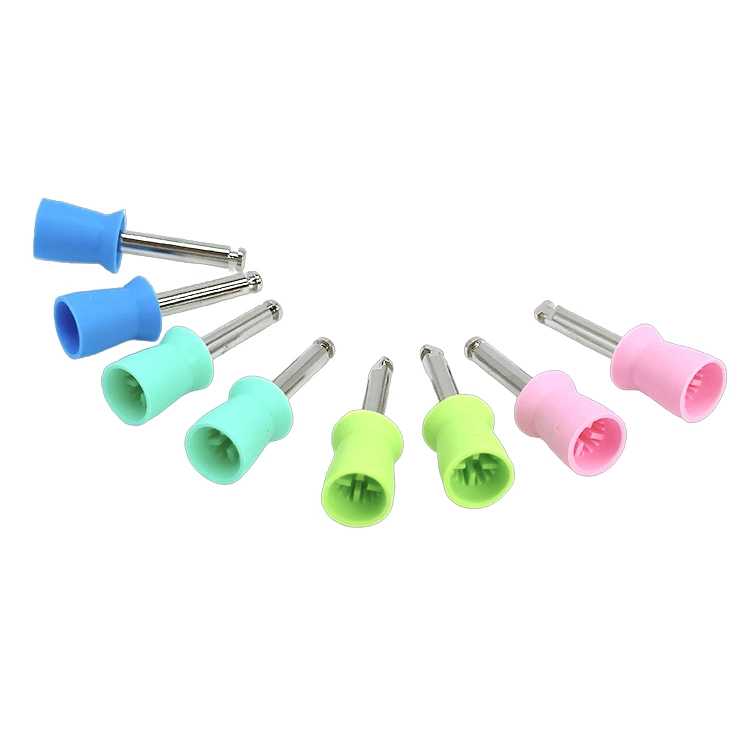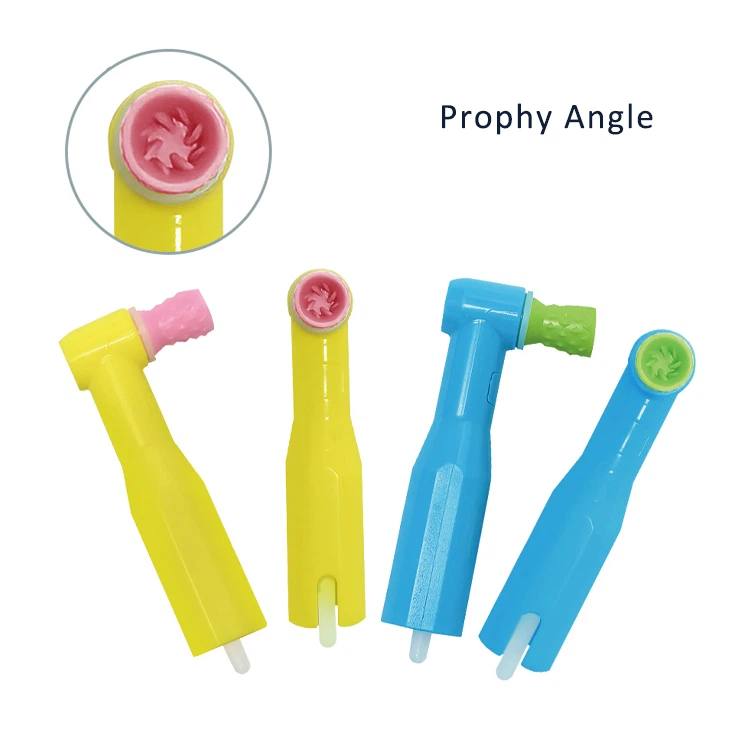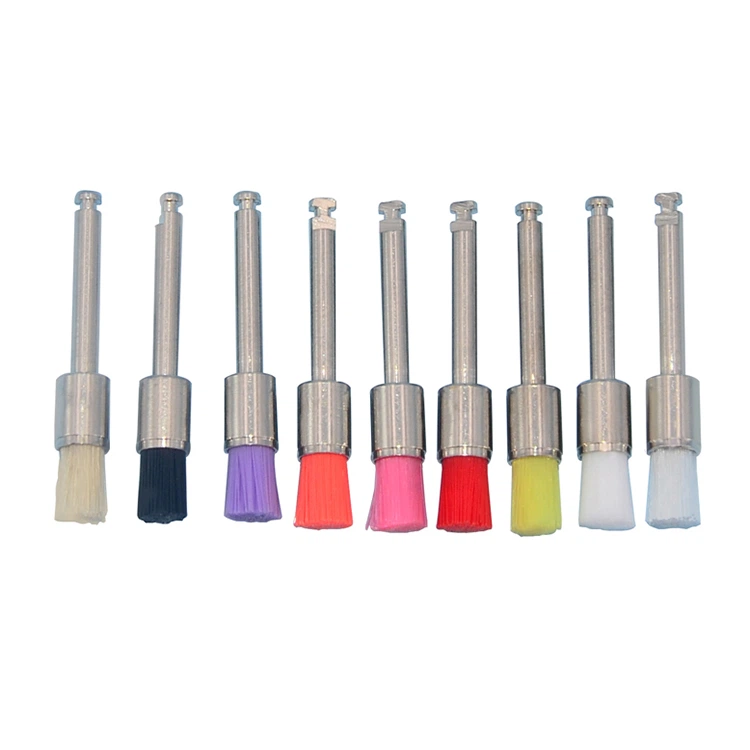
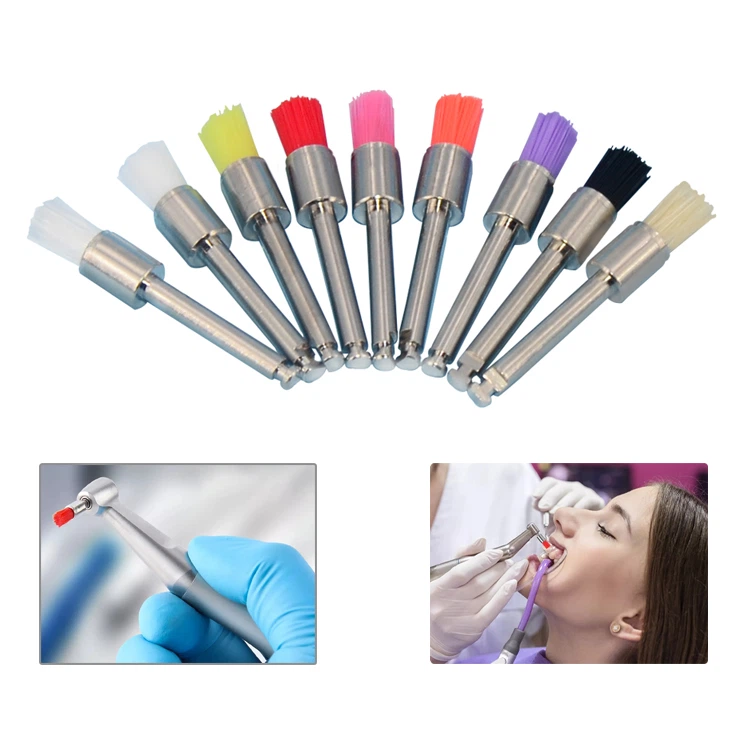
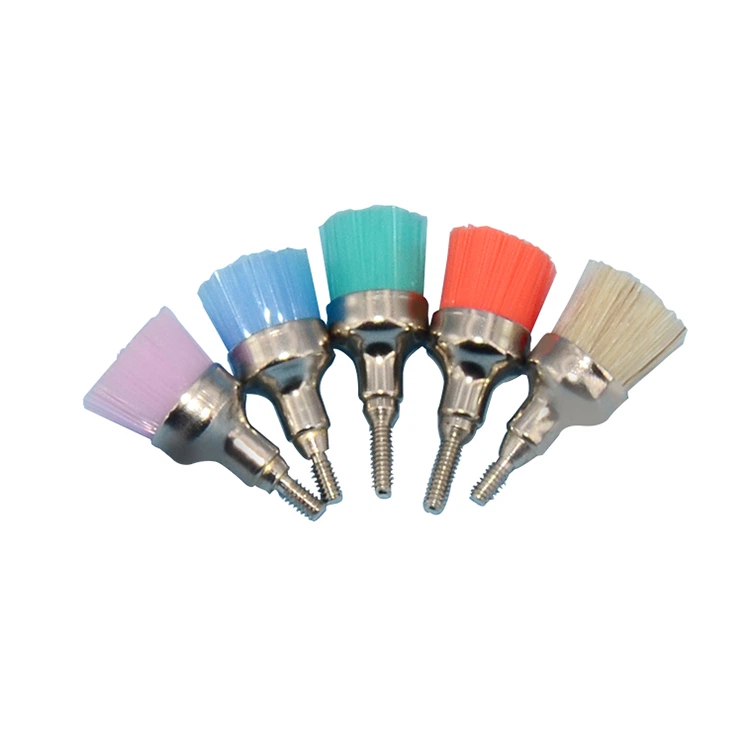
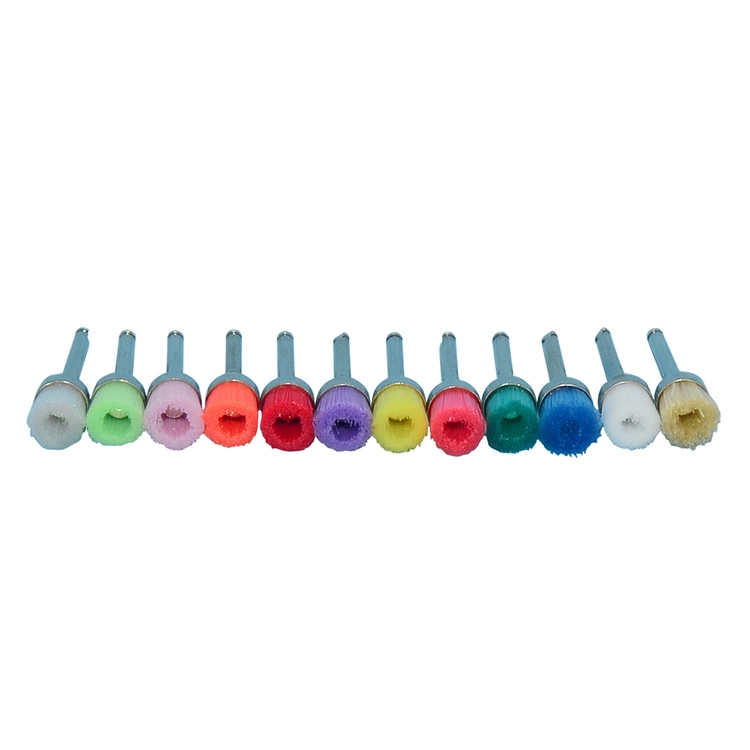
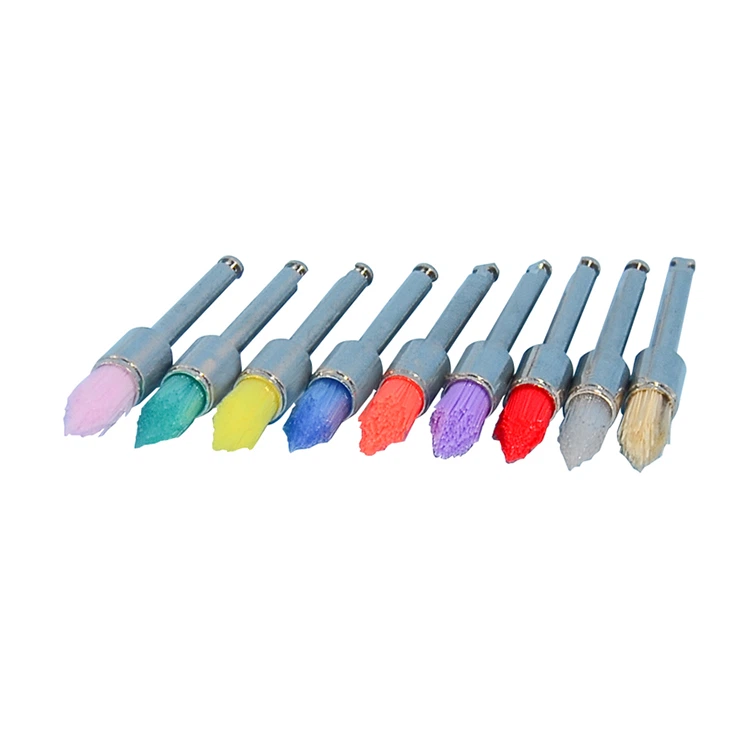
Prophy Brush
- Prophy Brushes are made with Nylon,bristles for safe and effective cleaning
- There are different types to choose
- Flat Brush: suitable for comprehensive polishing of tooth surfaces
- Tapered Teeth Brush: Used for cleaning between teeth and other hard-to-reach areas
Description
Dental prophy brush is a specialized instrument for oral cleaning and tooth polishing, generally used in dental conventions and oral care. It helps dentists to remove plaque and light tartar from the surface of the teeth during cleaning and treatment, restoring the shine of the teeth.
Prophy brush usually consist of a stainless steel base and high-strength, abrasion-resistant bristles that are pliable enough to get into the bumps and bumps on the surface of the teeth, as well as into hard-to-reach areas. A variety of brush head sizes are available depending on the area of the mouth to be treated, such as flat brushes, tapered brushes and cup brushes.
Prophy Brush Category
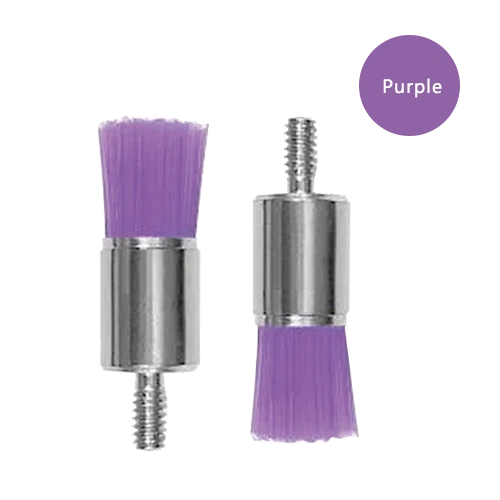
GD-1573
Screw in
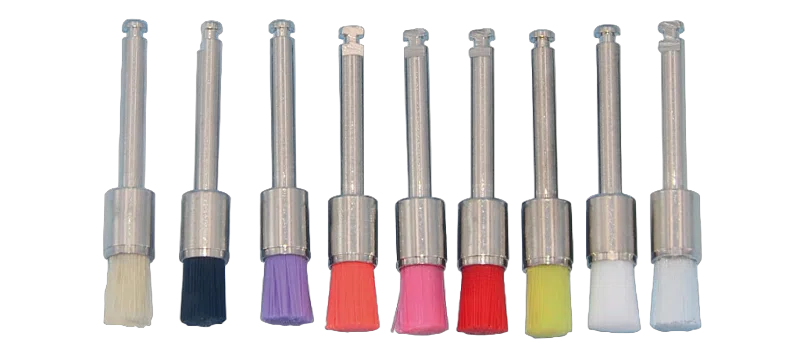
GD-1570
Latch Type
Tapered Teeth Brush
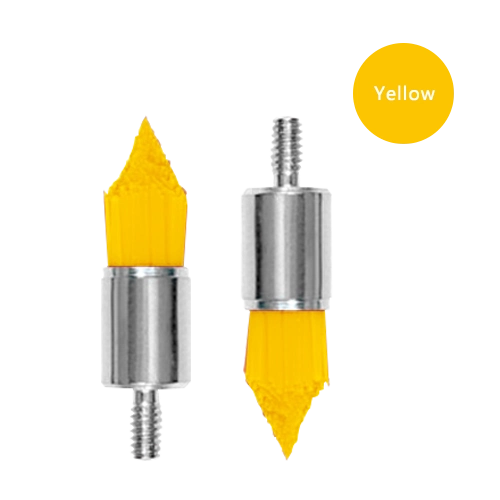
GD-1574
Screw in
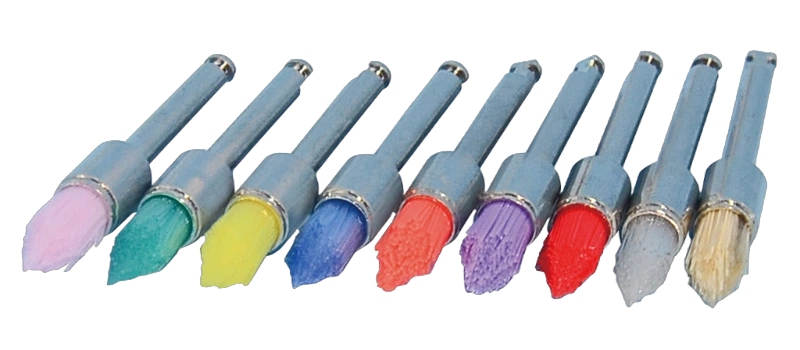
GD-1571
Latch Type
Cup Brush
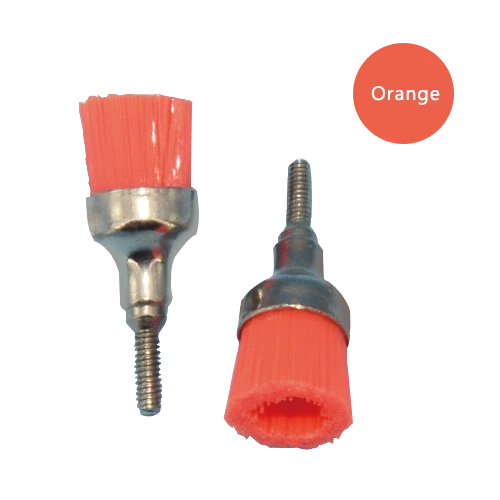
GD-1575
Screw in
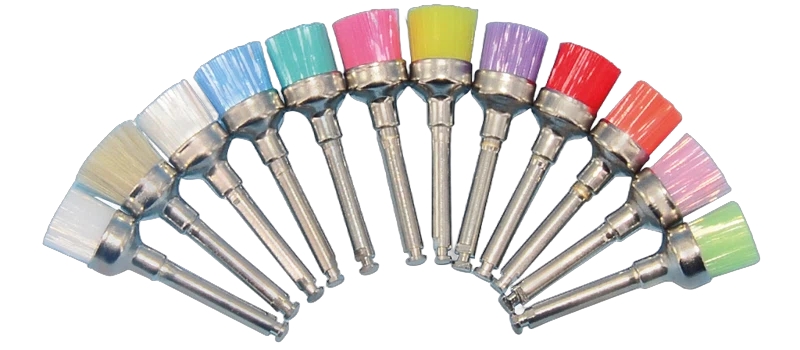
GD-1572
Latch Type
Dental prophy brushes, as an effective and professional oral care tool, can significantly enhance the patient’s treatment experience and oral health. Choosing the right prophy brush product is an important part of ensuring treatment results and patient comfort.
Please feel free to contact us!
If you need more detailed information or order high quality dental prophy brushes.
Related Products
The Principle of Prophy Brush
Dental prophy brushes are instruments used for tooth polishing. They primarily rely on the friction generated by rotating bristles against teeth to remove stains, plaque, and residual materials from certain dental procedures. The bristles of prophy brushes are typically made of nylon soft bristles, nylon hard bristles, or animal bristle. To enhance friction and achieve uniform polishing, different grit sizes of polishing paste are typically used in conjunction with the brush. This is similar to using sandpaper of different grit sizes to polish metal. The principle is the same.
How to Use Prophy Brush
Dental prophy brushes are categorized based on the shape of their brush heads into flat brushes, tapered brushes, and cup-shaped brushes.
1. Choose the suitable prophy brush:
First, choose the suitable brush head based on the patient’s oral condition and the location of the teeth to be polished. If the patient’s teeth are sensitive, choose a soft-bristle brush or animal bristle brush, as these bristles are finer and minimize stimulation to the teeth.
2. Apply polishing paste:
Apply a thin layer of polishing paste to the tooth surface, ensuring that all areas to be polished are evenly covered.
3. To start polishing teeth:
Adjust the speed of the prophy brush motor, then slowly approach the tooth surface, and cycle through each tooth surface to ensure even results. If polishing narrow interdental spaces, switch to a tapered brush head. You can use a variety of brush heads in combination. Sometimes a prophy cup is also need, use the flexibility of rubber to ensure optimal polishing results.
4. Clean the mouth:
After completing the polishing procedure, rinse the mouth with water or mouthwash to remove debris and residual polishing paste generated during polishing.
Applications of Dental Prophy Brush
We learned in middle school that friction is related to pressure and the coefficient of friction. Therefore, different pressure levels, prophy brush heads, and polishing pastes are used when treating different substances on the tooth surface. Let’s take a closer look at several different scenarios.
1. Polishing After Dental Fillings
During the dental filling process, filling materials (such as resin, silver-mercury alloy, etc.) often overflow, forming rough patches on the tooth surface. If these irregular patches are not addressed, they not only affect aesthetics but also lead to the accumulation of food debris and dental plaque, which can cause various oral health issues over time. Therefore, after the filling material has cured, a dental prophy brush should be used to remove these patches, making the filled area smooth and even.
Once the filling material has cured, it becomes hard and covers the tooth surface. Therefore, a hard-bristled polishing brush and a polishing paste with a coarser grit can be used, and applying slightly more pressure is acceptable. After the patches have been polished away, switch to a soft-bristled prophy brush or prophy cup to remove any remaining fine marks on the tooth surface, restoring the tooth’s smoothness and luster.
2. Polishing after fluoride treatment
After fluoride application, a thin layer of fluoride residue remains on the tooth surface, which is difficult to remove completely through regular rinsing and brushing. Therefore, dentists use prophy brushes to remove these residues. The fluoride agent is a paste-like substance, so it can be easily removed using a soft-bristle brush with minimal pressure. Avoid using hard-bristle brushes or applying excessive force to prevent tooth damage.
3. Polishing after orthodontic treatment
For patients undergoing orthodontic treatment, the tooth surfaces near the braces or orthodontic wire brackets may have plaque, tartar, and irregular marks. First, use a hard-bristled prophy brush to remove plaque and irregular marks. Then, use a soft-bristled brush for detailed polishing. This restores the teeth’s smooth and lustrous appearance.
4. Polishing teeth after cleaning
After professional ultrasonic teeth cleaning at a dental clinic, although the tartar attached to the teeth has been removed, the areas on the tooth surface previously occupied by tartar may have irregular edges. At this point, a prophy brush should be used to smooth these areas, restoring their smoothness. Otherwise, when the tongue comes into contact with them, it may cause discomfort.
5. Maintenance of dental restorations
Crowns after root canal treatment, inlays for cavities, all-ceramic crowns, and porcelain veneers all use adhesive during fixation. After the adhesive cures, the irregular parts must be polished with a prophy brush to seamlessly integrate them into the natural teeth. Additionally, regular polishing maintenance is required during subsequent use. Since both crowns and inlays have areas where they connect with natural teeth, over time these areas may develop rough or irregular marks. This can lead to the proliferation of dental plaque and an increased risk of cavities. Therefore, regular polishing of these dental restorations is necessary to maintain their smoothness and prevent plaque from adhering.
Precautions for Using Prophy Brush
- Avoid Excessive Wear: When using a prophy brush, avoid applying excessive force and do not use an unsuitable brush head, as this may damage the enamel on the surface of the teeth. Normal enamel is less than 2mm thick, and once it is worn away, it cannot regenerate.
- Disinfection and Sterilization: Disinfect and sterilize the prophy brush after each use to prevent cross-contamination.
- Pre-Use Inspection: Inspect the prophy brush before use to ensure the bristles are intact. If the bristles are severely worn, replace the brush promptly.
- Special Care for Sensitive Teeth: For patients with sensitive teeth, use a soft-bristle or animal bristle prophy brush and reduce the polishing time and pressure.
- Use specialized polishing paste: Choose an suitable specialized polishing paste based on the condition of the teeth, and avoid using pastes containing coarse abrasives, as these can damage the enamel.
FAQs
The dental prophy brush is a instrument used for tooth polishing, primarily to remove stains, plaque, and minor scratches from the tooth surface, making the teeth smoother and whiter.
- Types: Based on the shape of the brush head, they can be divided into three types: cup-shaped, flat-headed, and cone-shaped.
- Materials: These include nylon hard bristles, nylon soft bristles, and animal bristle.
The prophy brushes can effectively remove small particles of stains and plaque from the tooth surface, but they cannot remove already formed tartar. It can assist in post-cleaning procedures after tartar removal. The primary function of a polishing brush is to enhance the smoothness and brightness of the tooth surface.
If performed correctly, the polishing process does not harm teeth. Follow the precautions mentioned above, use appropriate speed settings, and select suitable polishing brushes and polishing paste.
Dental prophy brushes are suitable for healthy teeth, but for those with sensitive teeth or gum disease, use should be cautious, and it is best to use under the guidance of a dentist.
Polishing removes surface stains from teeth, making them appear smoother and more lustrous, but it is not equivalent to whitening. Tooth color is also related to natural pigmentation and overall health.
Dental prophy brushes are typically used during regular dental cleanings. A recommended frequency is every six months for an examination and cleaning polish. Please note that excessive polishing for aesthetic purposes can lead to enamel wear and cavities.

